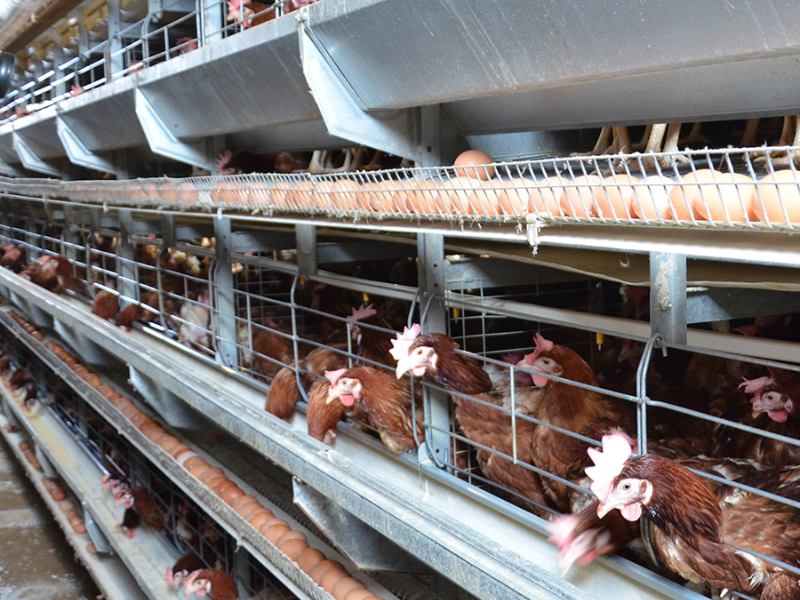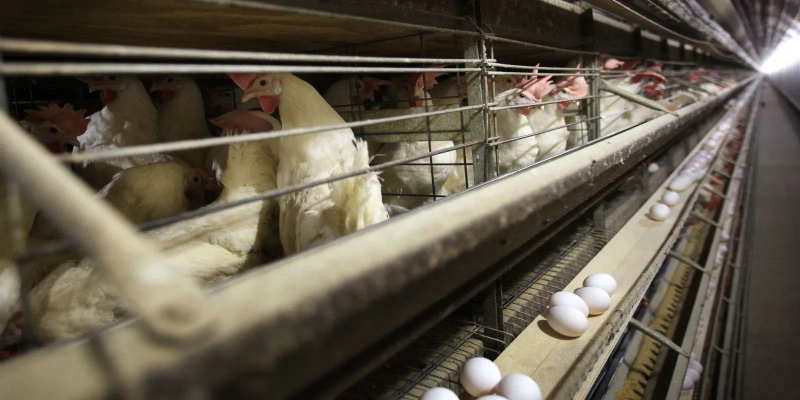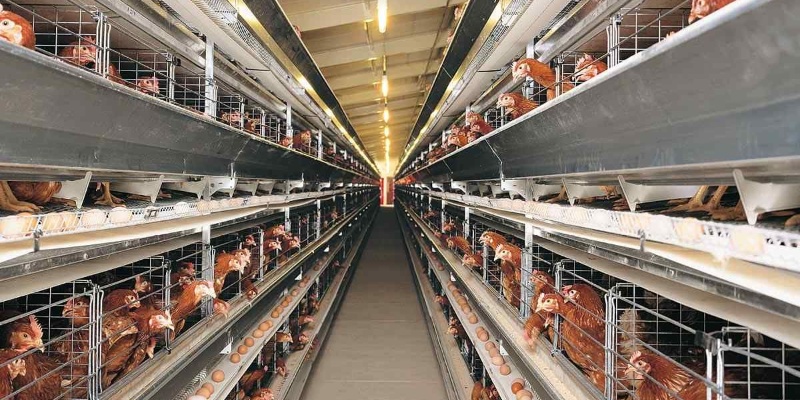
Business Plan for a 20,000 Laying Hen Farm in Kenya
As the demand for poultry products continues to rise in Kenya and across Africa, the opportunity for establishing a successful laying hen farm has never been better. A well-planned business model can yield substantial profits while contributing to food security in the region. In this article, we will explore a detailed business plan for a 20,000 laying hen farm in Kenya and showcase how Livi Machinery’s state-of-the-art 20,000 laying hen cages in Kenya can be a game-changer for aspiring poultry farmers.
Executive Summary
Starting a 20,000 laying hen farm in Kenya requires careful planning, investment in quality equipment, and a clear understanding of market dynamics. With the right infrastructure, such as high-quality laying hen cages, effective management practices, and robust marketing strategies, farmers can build a profitable venture that meets the growing demands of consumers for eggs and poultry products.
Market Analysis
Kenya’s poultry industry is one of the most dynamic sectors within agriculture, driven by urbanization, a growing middle class, and rising health consciousness among consumers. The demand for eggs, in particular, is increasing, fueled by their nutritional value and affordability.
Target Market
The primary consumers of eggs include households, restaurants, and retail outlets. By targeting both local and regional markets, a laying hen farm can achieve significant sales volumes. Furthermore, the export potential for Kenyan eggs to neighboring countries provides an additional revenue stream that cannot be ignored.
Competition Landscape
While there are established players in the poultry sector, many farmers still operate on a small scale. By investing in modern technology, such as automatic feeding systems, climate control, and efficient egg collection through our 20,000 laying hen cages in Kenya, new entrants can differentiate themselves and gain a competitive edge.
Farm Design and Infrastructure
Designing a successful farm involves various considerations, including land acquisition, layout, and construction of necessary buildings.
Land Acquisition
For a 20,000 laying hen farm in Kenya, approximately 2-3 acres of land will suffice. The location should have good access to transport routes, water supply, and supportive infrastructure. Climate is also a crucial factor; areas with moderate temperatures are ideal for poultry farming.
Cage System Installation
At Livi Machinery, we specialize in providing customized solutions suitable for large-scale poultry operations. Our 20,000 laying hen cages in Kenya are designed to maximize space, enhance bird welfare, and improve productivity. The cages are equipped with features such as:
- Automatic feeding and drinking systems: Ensures consistent access to food and water.
- Egg collection mechanisms: Simplifies the harvesting process and reduces labor costs.
- Ventilation and temperature control: Maintains optimal living conditions for the hens.
Investing in these technologies not only increases efficiency but also minimizes labor needs and operational costs.
Biosecurity Measures
Implementing rigorous biosecurity protocols is essential to prevent disease outbreaks. This includes controlled access to the farm, sanitation procedures, and vaccinations. Regular health check-ups and maintaining a clean environment will ensure the well-being of the flock and enhance productivity.
Operational Plan
An efficient operational plan outlines how the farm will be managed on a day-to-day basis to ensure smooth functioning.
Staffing
For a 20,000 laying hen farm in Kenya, it is advisable to hire a skilled team comprising a farm manager, veterinarians, and workers responsible for feeding, cleaning, and maintenance. Investing in training programs will equip staff with the knowledge needed to manage the farm effectively.
Feeding and Nutrition
A balanced diet is crucial for the hens to produce high-quality eggs consistently. Working with animal nutritionists to formulate feed that meets the hens’ dietary requirements will optimize growth and egg production. Bulk purchasing of feed ingredients can also help in reducing costs.
Record Keeping
Maintaining accurate records of production, expenses, and sales is vital for evaluating performance and making informed decisions. Utilizing software for farm management can streamline this process, enabling farmers to monitor key metrics such as feed conversion ratios and egg production rates.
Marketing Strategy
An effective marketing strategy is essential for reaching target consumers and driving sales.
Branding
Developing a strong brand identity will help differentiate your products in the market. Quality packaging, labeling, and consistent messaging about the benefits of your eggs can attract consumers looking for reliable sources of protein.
Direct Sales Channels
Consider establishing direct sales channels, such as selling to local grocery stores, restaurants, and farmers’ markets. Engaging with consumers directly fosters relationships and enhances brand loyalty.
Online Presence
Utilizing social media platforms and an informative website can expand your reach. Sharing farm stories, nutritional information, and recipes can engage consumers and encourage them to choose your products over competitors.

Financial Projections
A comprehensive financial analysis will provide insights into the expected returns from this investment.
Initial Investment
The initial setup cost for a 20,000 laying hen farm in Kenya will include land purchase or rental, construction of buildings, installation of cages (including our quality 20,000 laying hen cages in Kenya), and purchasing initial stock of hens. A rough estimate for this investment can range from $50,000 to $100,000 depending on location, construction materials, and equipment specifications.
Operational Costs
Ongoing operational expenses will include:
- Feed costs: Depending on the feed formulation and market prices, expect to spend around $0.10 to $0.15 per hen per day.
- Labor costs: Salaries for farm staff, which can vary but should be budgeted properly to ensure skilled labor is retained.
- Veterinary care: Regular health check-ups, vaccinations, and medications.
- Utilities and maintenance: Water, energy, waste management, and repairs will also incur costs.
Revenue Forecast
With a well-managed farm, you can expect each laying hen to produce around 250-300 eggs annually. For a 20,000 laying hen farm in Kenya, this translates to approximately 5 million to 6 million eggs produced per year.
If selling at an average price of $0.10 per egg, the total annual revenue could reach $500,000 to $600,000. Deducting the estimated operational costs will provide a clearer picture of net profit margins.
Risk Management
Every business comes with its own set of risks, especially in agriculture. Developing a risk management plan will help mitigate potential challenges.
Disease Outbreaks
Implementing strict biosecurity measures is paramount. Regular training for staff, bio-vigilance, and emergency response plans can significantly reduce the risk of disease affecting your flock.
Market Fluctuations
The poultry market can experience fluctuations due to changes in consumer preferences, seasonal demand, or competition. Diversifying product offerings, such as selling organic or free-range eggs, can help capture different market segments and stabilize income.
Climate Impact
Adverse weather conditions can impact production. Investing in climate control systems and selecting disease-resistant breeds can help manage these environmental risks.
Sustainability Practices
In today’s market, consumers are increasingly concerned about sustainable farming practices. Integrating sustainability into your operations can not only enhance your brand image but also reduce costs.
Waste Management
Implementing composting systems for poultry waste can contribute to soil enrichment and reduce disposal costs. You might also consider producing biogas from manure; this can serve as an alternative energy source for the farm.
Resource Efficiency
Using water-saving technologies and renewable energy sources, such as solar panels, can cut down on utility costs and decrease the farm’s carbon footprint.
Conclusion
Establishing a 20,000 laying hen farm in Kenya represents a viable and potentially lucrative business opportunity. By leveraging high-quality equipment like 20,000 laying hen cages in Kenya from Livi Machinery, adhering to best practices in management, and devising robust marketing strategies, farmers can build a successful venture that meets the growing demand for poultry products.
As the poultry sector continues to evolve, embracing innovation and sustainability will be key differentiators for success. With the right planning and execution, your laying hen farm can not only be profitable but also contribute positively to Kenya’s agricultural landscape and food security.
For more information on our 20,000 laying hen cages in Kenya, feel free to contact Livi Machinery. We are committed to providing you with the best solutions tailored to your specific needs, ensuring your journey in poultry farming starts on the right foot.

